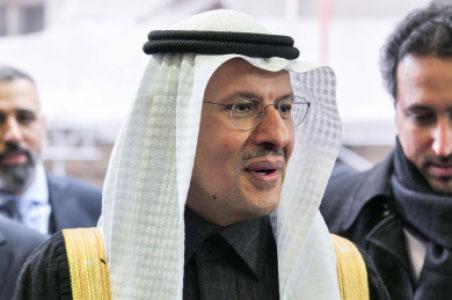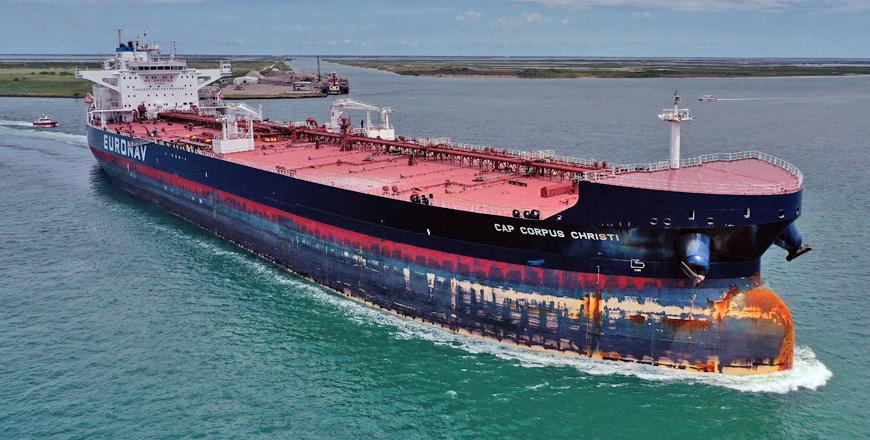You are here
OPEC and allies seek to thrash out cuts deal
By AFP - Dec 04,2020 - Last updated at Dec 04,2020

Saudi Minister of Energy Prince Abdulaziz Bin Salman Al Saud arrives for the 177th Organisation of the Petroleum Exporting Countries meeting in Vienna, Austria, on December 5, 2019 (AFP file photo)
LONDON — The members of the Organisation of the Petroleum Exporting Countries (OPEC) cartel of oil producers are meeting with their allies on Thursday to see if they can reach an accord on extending production cuts over the coming months.
The video-conference meeting of the OPEC+ grouping was pushed back from Tuesday and comes after three days of inconclusive discussions among the 13 members of OPEC proper.
Observers say the postponement points to an agreement being harder to reach than initially thought.
The meeting was originally scheduled for 13:00 GMT but eventually started almost two hours later.
The first wave of the coronavirus pandemic sent oil demand — and prices — plummeting in the spring, with the benchmark American contract even going into negative territory for the first time in history.
After tough negotiations in April, OPEC+ — which includes Russia — agreed on drastic production cuts in order to try to put a floor under oil prices.
Despite hitting producers' revenues hard, those cuts did help drag prices back up again.
However, the second wave of the pandemic has dashed hopes of a rapid "V-shaped" recovery for the economy and for oil demand.
Most producers, including OPEC kingpin Saudi Arabia, therefore favour an extension of the current agreement, which entails a cut of 7.7 million barrels per day (bpd) and was scheduled to be eased to 5.8 million bpd on January 1.
"OPEC and allies are said to be leaning towards a rollover of current cuts with a gradual increase in output," according to analyst Neil Wilson from Markets.com."Whether the easing would begin in January or after the three-month delay discussed before the meeting is unclear," wrote Stephen Innes of Axi.
After falling slightly in early Thursday trading, prices for both the US crude oil benchmark West Texas Intermediate (WTI) and Europe's Brent North Sea were holding steady just after the start of the OPEC+ meeting, at $45.30 and $48.36, respectively.
Thorny subjects
Markets were expecting producers to be able to agree on an extension of three to six months, with many viewing Monday's meeting as a formality to sign it off.
But a recent surge in crude prices — up by 25 per cent over the course of November — together with positive news from several companies on coronavirus vaccines means some countries may need more convincing of the need for further sacrifices.
Meanwhile, the perennially thorny subject of whether all members are respecting production quotas laid down in previous agreements seems to once again be on the table.
Some insist that those who are currently overproducing be made to comply before further restrictions are imposed.
"It is unlikely that the strict implementation of the agreed cuts... will be achieved, which will undermine their effectiveness and confidence in the group," according to Eugen Weinberg of Commerzbank.
The cartel will also have to pay attention to developments in the three members which have been granted exemptions from quotas — Libya, Iran and Venezuela.
Libya's production had been almost wiped out by civil conflict but has spiked since October and now stands at over 1 million bpd, according to the country's National Oil Corporation.
In the longer term, Iran's offer on the oil market may also increase if the incoming US administration pursues a policy of detente with Tehran and relaxes sanctions.
That would lead hundreds of thousands of barrels coming on to the market, exerting a fresh downward pressure on prices.
Related Articles
VIENNA — An OPEC+ panel on Monday reaffirmed the oil cartel's plan to gradually hike output starting from April, after US President Donald T
VIENNA — The cartel of the Organisation of the Petroleum Exporting Countries (OPEC) members decided on Saturday to extend deep output cuts t
VIENNA — The OPEC+ group of oil-producing nations agreed Sunday to extend their production cuts in a bid to support prices, as economic and












